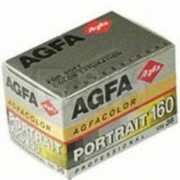Difference between revisions of "Agfacolor"
Jump to navigation
Jump to search
m (Text replace - "== Authority ==" to "== Sources Checked for Data in Record ==") |
|||
| Line 8: | Line 8: | ||
* Luis Nadeau, Luis Nadeau, ''Encyclopedia of Printing, Photographic, and Photomechanical Processes'', Atelier, New Brunswick, 1997 | * Luis Nadeau, Luis Nadeau, ''Encyclopedia of Printing, Photographic, and Photomechanical Processes'', Atelier, New Brunswick, 1997 | ||
| − | * Wikipedia, the free encyclopedia, at | + | * Wikipedia, the free encyclopedia, at http://en.wikipedia.org/wiki/Agfacolor (Accessed Mar. 1, 2006) |
[[Category:Materials database]] | [[Category:Materials database]] | ||
Revision as of 12:06, 27 January 2020
Description
[Agfa, Ger.] A registered trademark originally used for color photographic plates manufactured in Berlin in 1916. Agfacolor plates were made with tiny dyed grains of gum arabic or shellac. The fine-grains gave an intense color. Agfacolor grain sheets were introduced as rolls and sheets in 1932. A slide film, called Agfacolor Neu (or Agfacolor new) was introduced in 1936. It uses the subtractive color process to produce color negatives. Agfacolor printing paper that used a multilayer negative-positive process was introduced in 1942.
Sources Checked for Data in Record
- Luis Nadeau, Luis Nadeau, Encyclopedia of Printing, Photographic, and Photomechanical Processes, Atelier, New Brunswick, 1997
- Wikipedia, the free encyclopedia, at http://en.wikipedia.org/wiki/Agfacolor (Accessed Mar. 1, 2006)
